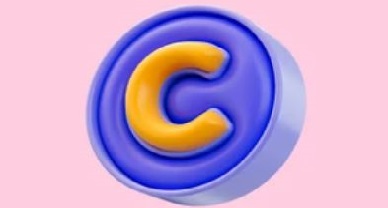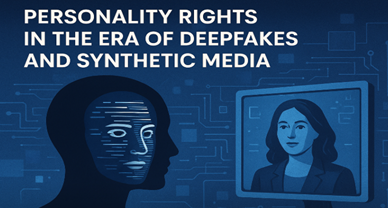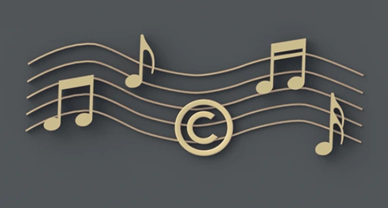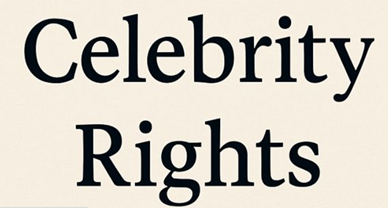Evolution of Tests of Creativity in Copyrights
Introduction
Originality in copyright works is the sine qua non of all the copyright regimes of the world. The definition of “original” as most people understand it refers to something that has never been done before by any person. Originality is the quality that distinguishes produced or invented works from copies, clones, forgeries, or derivative works by being new or novel. It was written with a distinct style and message. The word “originality” is frequently used in conjunction with the creativity of writers, thinkers, and artists. The Copyright, Designs and Patents Act of 1988 in the United Kingdom specifies in Section (1)(1)(a) that copyright exists in “original literary, dramatic, musical, or artistic works.” Yet the Act does not define what “original” clearly means.
In law, the quality of an idea’s expression is given more weight. The Indian Copyright Act of 1957 through Section 13(1), stipulates that “original literary, dramatic, musical, and aesthetic works” are protected by copyright. The Act, however, omits any definition or methodology for judging a work’s originality. The amount of originality necessary for a work to claim copyright protection must now be decided and interpreted by the court.
There is no definite and single, unified concept of “originality” and there have been different doctrines which have tried to define the concept. Certain doctrines have been illustrated below to provide clarity on the Indian approach.
Doctrine of Sweat of the Brow
This concept does away with the need for works to be original in order to be protected by copyright. Even when it lacks vision and aptitude, it still protects the author’s toil and sweat. Here, merely automated and mechanical work that lacks originality is also protected by the said copyright doctrine. For instance, in accordance with this doctrine, the author would be entitled to copyright protection if someone collected different poems that were previously in the public domain and produced in a single document.
[Image Sources : Shutterstock]
The rationale of this doctrine is determined by considering the judicial pronouncement as stated in University of London Press vs. University Tutorial Press[1]. The University of London declared in a resolution that it owned the copyright to all examination materials created by its staff of examiners. Examiners were chosen with the intention of setting the matriculation examination exam papers. Students were allowed to select their own questions if they followed the curriculum and took into account the level of knowledge required of them. The University and University of London Press Limited agreed into a contract under which the former would receive payment in exchange for receiving the copyright and all other rights to publish the matriculation examination papers. Eventually, a publication featuring sixteen of the forty-two matriculation papers was released by the University Tutorial Publishing Limited. The papers were taken from copies of the examination papers that students provided, not from publications by the University of London Press Ltd. Together with the question sheets, the publication also included responses to some of the questions and criticism of the way the questions were worded. University Tutorial Press was sued by the plaintiff, University of London Press, for copyright infringement.
According to the plaintiff, the phrase “literary work” as employed in the Act has a very broad definition that encompasses maps, charts, plans, tables, and compilations as well as works that are expressed in print or writing, regardless of whether the quality or style is high. As a result, the exam questions will also be considered “literary work”. The defendant argued that the questions were of a common type and were not distinctive or unusual enough to warrant copyright protection.
According to the Court, expression need not be in an original or innovative form in order to be protected under the Copyright Act. It does demand, however, that no part of the work be plagiarised. It must be the author’s original work. Because they were created by the authors, the exam questions are unique in the sense of copyright laws. The court ruled that the plaintiff’s copyright cannot be denied just because other examiners have asked questions akin to hers.
In Ladbroke (Football) Ltd vs. William Hill (Football) Ltd[2], the court reiterated the same idea, saying that it is irrelevant whether a work is wise or foolish, accurate or inaccurate, or whether it has literary worth or not. The requirement of ‘labour, skill and judgment’ and any such requirement of originality is limited to the extent that the work originated from the author.
In India, the doctrine was followed for a considerably long time. In Kartar Singh Giani vs. Ladha Singh[3], the hon’ble Supreme Court, considering the approach of English courts, held that copyright law does not prevent a person from taking what is useful from an original work with additions and improvements. The Court has held neither original thought nor original research are necessary for claiming copyright and even compilations such as dictionaries, gazettes, maps, arithmetic, almanacs, encyclopaedias etc. can have copyright.
Modicum of creativity
The interpretation of “originality” has undergone a paradigm shift from the “sweat of the brow” doctrine to the “modicum of creativity” standard as illustrated in Feist Publication Inc. vs. Rural Telephone Service[4] by the hon’ble United States Supreme Court.
With the information in the public domain, the Rural Telephone Service issued a phone book. A publishing company called Feist Publications Inc. specialised in regional phone directories. The 11 separate telephone service areas serviced by Feist’s directories span a large geographic area. Both businesses offer their subscribers free directories, and they both profit from the yellow page adverts. Both engaged in fierce competition for Yellow Pages advertising. As Feist was not a phone company, it had no independent access to any subscriber data. Feist approached each of the eleven local phone providers and made an offer to buy the right to use their white pages listings in exchange for the entries it needed for its directory. Rural declined to provide Feist a listing licence. Feist thereby violated Rural’s rights by using their listings. Feist then hired staff to investigate and validate the facts. As a result, Feist’s listing was more detailed than Rural’s. Yet, some of these postings were the same as those in Rural. Feist Publishers was sued by Rural Telephone Service for copyright violations. The main legal issue was whether a compilation like a phone book was covered by the Copyright statute.
In this case, the court negated the labour and skills doctrine and held that in order to be original, a work must not only have been a product of independent creation but must also exhibit a “modicum of creativity”. The Supreme Court prompted ‘creative originality’ and laid down the new test to protect the creation on basis of the minimal creativity. This doctrine stipulates that originality subsists in a work where enough intellectual creativity and judgment has gone into the creation of that work. The standard of creativity need not be high but a minimum level of creativity should be there for copyright protection.
The most important Indian Case on this subject is Eastern Book Company v. D.B. Modak[5], where the Supreme Court discarded the ‘Sweat of the Brow’ doctrine and shifted to a ‘Modicum of creativity’ approach as followed in the US. The issue is whether judgements are copyrighted. The Supreme Court Case Reporter, SCC, was offended by third parties violating their copyright and publishing software that included judgements edited by SCC as well as other amendments made by the editors of SCC, such as cross references, head notes, the short note’s lead words, and the long note’s brief summary of the facts and pertinent passage from the court’s judgements, as well as standardisation and formatting. In this instance, the idea of “flavour of minimum necessity of originality” was introduced. It was decided that in order to establish copyright, some degree of inventiveness in the work was necessary in order to make a copyright claim, rather than something having to be novel or obscure. The Court determined that these contributions made by the SCC editors qualify for copyright protection because they call for the editor to apply legal expertise, ability, and judgement. As a result, this activity and its development have a minimal creative flair and benefit from copyright protection.
The Court consequently granted copyright protection to the SCC editors’ changes and contributions. The Court also ruled that no copyright could be asserted on court orders and rulings because they are in the public domain and everyone has the freedom to use and publish them.
Skills and judgment
The test is applied to determine whether the ‘work’ in question is original or not. To ascertain the same, the author should have applied his ‘skill and judgement’ in creating the work and such work created should have the minimal element of creativity thereby leading the work to be original. The hon’ble Supreme Court of Canada in CCH Canadian vs. Law Society of Upper Canada[6] observed as follows:
“37. … to be original under the Copyright Act the work must originate from an author, not be copied from another work, and must be the product of an author’s exercise of skill and judgment. The exercise of skill and judgment required to produce the work must not be so trivial that it could be characterized as a purely mechanical exercise. Creative works by definition are original and are protected by copyright, but creativity is not required in order to render a work original. The original work should be the product of an exercise of skill and judgment and it is a workable yet fair standard….”
Therefore, the Canadian standard of copyright is based on skill and judgment and not merely labour.
So, it becomes crucial that the work be an original creation of the author and not merely a copy from another source in order to establish a valid copyright. Such a piece of writing must be produced by the author using talent and judgement. Also, the author’s efforts should not be merely mechanical imitations of another person’s work; rather, they should be substantial in nature. The criteria of degree of originality is quantitative in nature since variation must be of a considerable rather than merely trivial kind.
A “product of an exercise of skill and judgement,” where “skill” is defined as “the use of one’s knowledge, developed aptitude, or practised ability in producing the work,” and “judgement” is defined as “the use of one’s capacity for discernment or ability to form an opinion or evaluation by comparing different possible options in producing the work,” is what constitutes a “original.”
The Eastern Book Company case[7], in addition to the requirement of ‘modicum of creativity’, the hon’ble court also required the application of skills and judgment. It was stated that the ‘Supreme Court Cases’ report required effective and substantial skill as well as exercise of judgment on the part of the law reporter while providing for paragraph numbering, internal referencing, brief descriptions, formatting etc and thus, such work was not trivial and mechanical in nature. Therefore, the Indian approach to originality of work involves modicum of creativity as well as the test of skills and judgment.
In Emergent Genetics India Pvt. Ltd. vs. Shailendra Shivam and Others[8], the hon’ble Delhi high court, to summarise the approach to test of originality, stated that not every industry or expensing of skills, results in copyrightable work, but only those which create works that are somewhat different in character, involve some intellectual effort and involve a certain degree of creativity.
Conclusion
Originality requires only that the author makes the selection or arrangement independently and that some minimal amount of creativity is present in the work of the author. While a copy of something in the public domain will not, if it be merely a copy, support a copyright, a distinguishable variation will. Also, it is important to note that for copyright protection, the work created by the author should be a result of substantial variation and not a result of trivial variation. In order to encourage the avenues of research and development, the law has been practical to hold that for originality, the work in question is not required to contain novelty.
India provides a practical approach in the ascertainment of an original work as it does not completely rely on modicum of creativity as developed by the U.S. Courts, in fact, it very well balances the sweat of the brow approach with the creativity element by ensuring that skill and judgement are exercised by the author in the creation of an original work. Since, the issue of originality is centric to the copyrightability of a work, regard must be placed on the skill and judgement test to be applied on the factual circumstances of every individual case.
Author: Tanya Saraswat , in case of any queries please contact/write back to us at support@ipandlegalfilings.com or IP & Legal Filing.
References
- Andreas Rahmatian, Originality in UK copyright law: The old “skill and labour” Doctrine under pressure – iic – international review of intellectual property and competition law SpringerLink (2013), https://link.springer.com/article/10.1007/s40319-012-0003-4 (last visited Apr 14, 2023).
- Hailshree Saksena, Doctrine of sweat of the brow SSRN (2009), https://papers.ssrn.com/sol3/papers.cfm?abstract_id=1398303 (last visited Apr 14, 2023).
[1] [1916] 2 Ch 601.
[2] [1964] 1 All ER 465.
[3] AIR 1934 Lahore 777.
[4] 499 U.S. 340 (1991).
[5] Appeal (civil) 6472 of 2004.
[6] [2004] 1 SCR 339.
[7] Supra note 5 at Pg. 6.
[8] 2011(47) PTC 494(Del)



